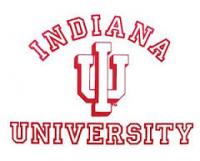Indiana University’s MPA grads develop skillsets suited for a variety of careers (with related video)
As part of GPN’s series on Master’s of Public Administration (MPA) programs and their value to government administrators, we reached out to Bob Kravchuk at Indiana University’s (IU) School of Public and Environmental Affairs (SPEA) in Bloomington, Ind. Kravchuk (picture below, on left) is professor and director of SPEA’s MPA program and SPEA Connect Online MPA program. 
IU’s MPA offering address society’s complex, interconnected problems through a traditional public administration and policy analysis curriculum blended with recent academic advances in leadership and governance. The school’s MPA is a two-year, 48-credit-hour program with four components. One part of the MPA covers completion of a semester-long project committed to solving a problem for a client organization.
Here are Professor Kravchuk’s views.
GPN: Can your school’s MPA degree offer new opportunities to our audience?
Bob Kravchuk: Indiana University’s School of Public and Environmental Affairs (SPEA) was the first school to combine public affairs with environmental science, policy, and management—and we haven’t stopped innovating since. We just launched two new academic concentrations for our MPA students: Health Policy and Water Management (for dual MPA/MSES students).
 But an MPA is not just about what you can study, but what you can do. One great thing about an MPA is that it helps you develop a skillset that is useful in the public, private, and nonprofit sectors. As the lines between government, business, and volunteer organizations become increasingly blurred, an MPA gives you the ability to adapt. Maybe you’re currently working in local government, but you’d really like to launch a nonprofit that can help connect the resources of local businesses to the needs you see in your community. An MPA can help you build the skills you need to connect the dots.
But an MPA is not just about what you can study, but what you can do. One great thing about an MPA is that it helps you develop a skillset that is useful in the public, private, and nonprofit sectors. As the lines between government, business, and volunteer organizations become increasingly blurred, an MPA gives you the ability to adapt. Maybe you’re currently working in local government, but you’d really like to launch a nonprofit that can help connect the resources of local businesses to the needs you see in your community. An MPA can help you build the skills you need to connect the dots.
GPN: Is 2015-16 a great time to earn an MPA for government administrators?
BK: I can’t think of a better time to jump into an MPA program. A quick scan of recent headlines shows that there are complex problems on the horizon that will demand comprehensive solutions — from health policy to cybersecurity to energy and climate change. At SPEA, we like to say that we are “preparing leaders for the greater good.” This means that we’re equipping students with skills to tackle shifting policy landscapes and preparing them to really dig in to issues that affect people and our planet.
But even if your interests lie closer to home, this is a great time to consider a career in public service. There’s a “quiet crisis” in many areas of local government right now. Lots of city managers and municipal finance directors are getting ready to retire, and we need both fresh and experienced MPAs to fill the gaps as they become available. There are many new opportunities for young people who want to get involved in municipal government.
GPN: Do you have any advice for our readers on choosing an MPA program?
BK: Conduct a cost-benefit analysis. Look at the price-value relationship of each program, and weigh the program’s ranking and graduate career outcomes against tuition. Choose a program where you can expect a significant return on your investment.
Next, go full-time. As a full-time, residential student, you’ll be able to develop valuable relationships with your peers and your professors, and you’ll be able to focus on a specialized academic concentration. If full-time study isn’t an option, consider a highly regarded online MPA program, like SPEA Connect. The flexibility of an online program offers students at all levels of their careers the chance to benefit from earning a top-ranked MPA.
Finally, consider your network. An MPA program should not only help you develop skills, but also connections. SPEA’s powerful alumni network includes 32,000 members across the U.S. and abroad. Many of our graduates work in the Midwest, but we also have significant alumni hubs in Washington, D.C., Denver, Chicago, and the Pacific Northwest. Through our signature capstone project (a semester-long project with a real world client), we’ve developed relationships with many organizations across the nation to deliver hands-on experience to our students. We’re also rapidly expanding our global and international partnerships, and we now partner with 18 universities in 12 countries on faculty exchanges, collaborative research, and study abroad opportunities.
GPN: Thank you for your views, Professor Bob Kravchuk.
The video outlines the purpose and goals of Indiana University.
_____________
To get connected and stay up-to-date with similar content from American City & County:
Like us on Facebook
Follow us on Twitter
Watch us on Youtube




















